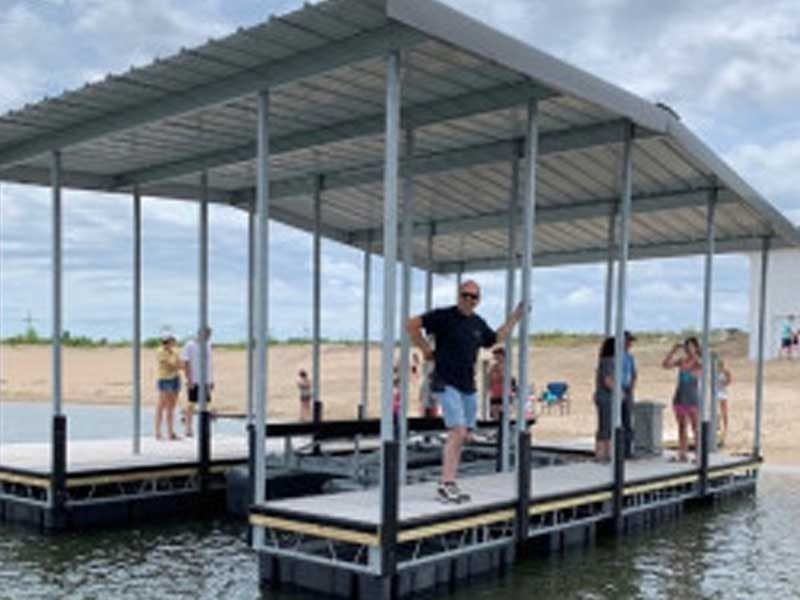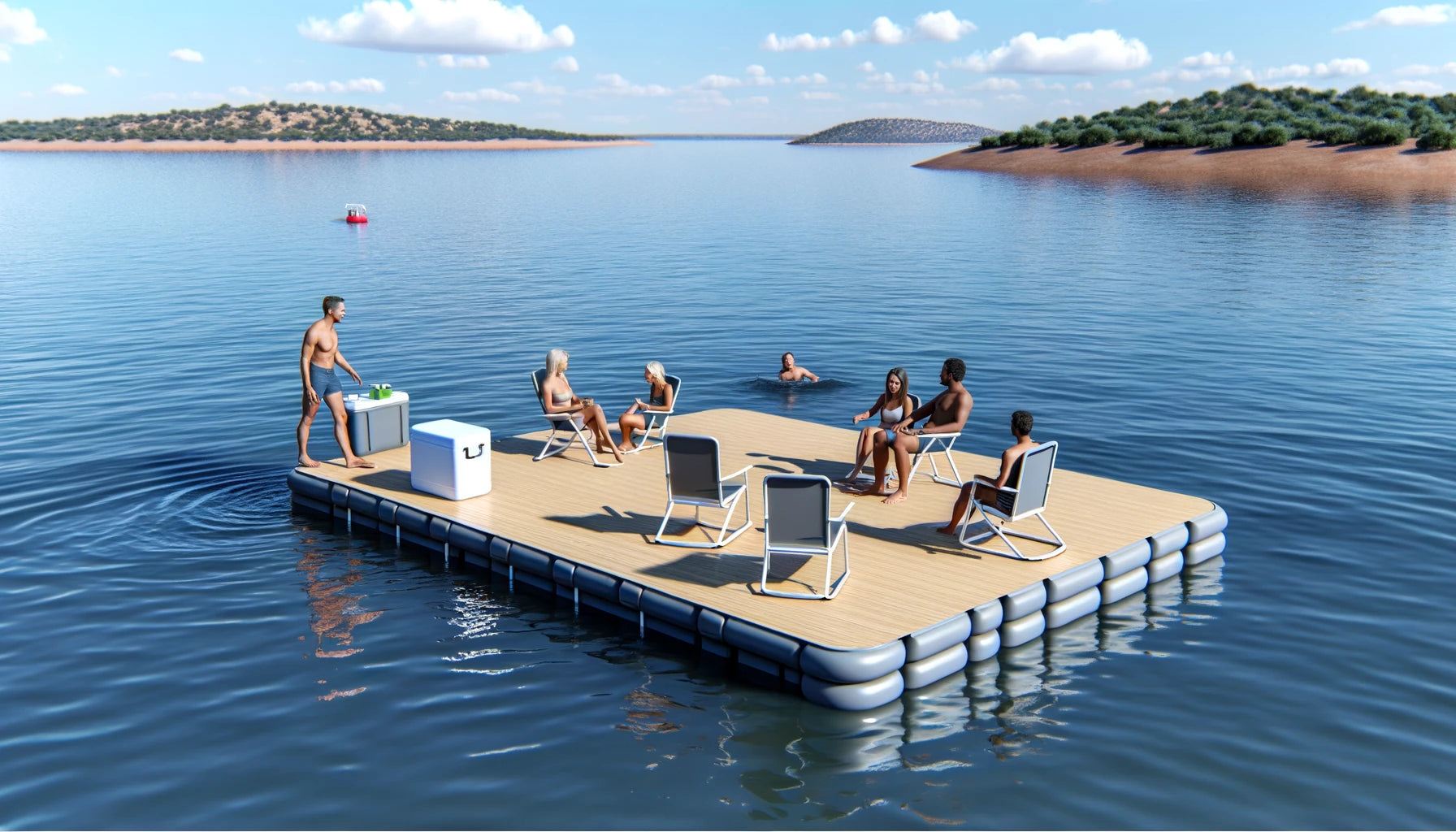The Ultimate Guide to Selecting the most effective Floating Docks
Selecting the optimal floating dock calls for a comprehensive understanding of different components that influence both performance and long life. Factors such as dock types, products, and important functions considerably affect your decision-making process.
Comprehending Floating Dock Types
When picking a drifting dock, it is important to recognize the different kinds available, as each offers distinct objectives and applications. Floating docks primarily come under three classifications: modular, fixed, and pontoon docks.
Modular docks are made up of specific areas that can be easily assembled or reconfigured, making them optimal for altering water levels and diverse usages, such as industrial procedures or leisure tasks. Their adaptability permits customization based on particular requirements.

Pontoon docks are characterized by their resilient framework, usually made up of several pontoons that supply stability and support. They are particularly appropriate for larger vessels and are commonly used in marinas or for beachfront buildings. Understanding these kinds help in selecting the most appropriate floating dock to satisfy details requirements, guaranteeing optimum performance and safety.
Trick Products for Sturdiness
Selecting the ideal materials for floating docks substantially influences their resilience and long life. One of the most typical materials include wood, plastic, metal, and composite products, each offering distinctive advantages and limitations.
Timber, typically preferred for its aesthetic charm, calls for routine upkeep to hold up against moisture and decay. Pressure-treated lumber can enhance resistance to rot, however it may still be prone to parasites and weathering.

Plastic docks, made of high-density polyethylene (HDPE), are immune to deterioration, UV radiation, and effect, making them a popular selection for seaside atmospheres. Their light-weight nature additionally assists in simple installation and moving.
Metal docks, normally built from light weight aluminum or galvanized steel, supply extraordinary stamina and resilience. They are immune to rust, especially when dealt with, but might require added insulation to avoid heat buildup in hot environments.
Composite materials, incorporating wood fibers and plastics, deliver the benefits of both timber and plastic, withstanding moisture and fading while needing minimal maintenance. - floating dock builder
Inevitably, the option of products ought to align with environmental problems, intended usage, and upkeep preferences to make certain the floating dock stays functional and visually pleasing over time.
Crucial Functions to Take Into Consideration
While the option of products is essential, considering vital features for floating docks is just as crucial to guarantee optimum performance and individual satisfaction. One essential attribute to assess is the dock's buoyancy capability, which determines how much weight it can support without immersing. floating docks. This is crucial for accommodating watercrafts, personal boat, and also recreational tasks
Additionally, mobility is a substantial consideration. Depending upon your demands, you might want a dock that is easy to take apart and deliver, especially if you intend to move find more info it seasonally. Security is another necessary feature; a well-designed floating dock ought to lessen activity brought on by wind and water currents, providing a secure platform for customers.
Safety and security functions, such as non-slip surface areas and rounded sides, are also essential to avoid accidents, particularly in wet conditions. Take into consideration the availability of accessories, such as bumpers, ladders, and cleats, which can boost the capability of your dock.
Installment and Upkeep Tips
Establishing up and keeping a drifting dock calls for mindful preparation and focus to information to guarantee its durability and optimal efficiency. Begin by picking an appropriate area that lessens direct exposure to solid currents and waves, which can create wear and tear. Make sure that the water deepness is sufficient for the dock's elevation which it is secured securely to stop movement.
Throughout installation, adhere to the manufacturer's standards closely, as incorrect setting up can jeopardize security. Use high-grade materials resistant to rust, such as aluminum or treated timber, to boost sturdiness. Routinely check all components, including drifts, adapters, and anchoring systems, for indications of damages or wear.
Upkeep is important for expanding the life of your dock. Tidy the surfaces regularly to stop algae buildup and check for any kind of loose fittings that might require tightening up. Guarantee they continue to be undamaged and complimentary from leaks if your dock makes use of flotation devices. Furthermore, consider using protective layers to wooden parts to minimize weathering effects. By sticking to these installment and maintenance ideas, you can take pleasure in a dependable and useful floating dock for years ahead.
Budgeting for Your Dock
Budgeting for your dock is a vital step that can dramatically impact your general satisfaction and investment in a waterfront residential or commercial property. Establishing a clear budget plan aids you navigate the different choices offered and guarantees you make informed choices that align with your monetary abilities.
Begin by figuring out the size and style of the dock you need, as these aspects will significantly affect the price. Floating docks can vary considerably in cost, depending on materials, buoyancy, and features like accessories and ramps. Research study various manufacturers and suppliers to contrast prices and recognize the marketplace value.
In enhancement to preliminary prices, think about continuous expenses such as maintenance, insurance, and prospective repair services. Allot funds for these reoccuring expenses to stay clear of shocks down the line. It's likewise sensible to allocate any kind of required authorizations or evaluations, which might be required by regional laws.
Lastly, maintain in mind the possible return on investment. A tactical dock can boost your building's value and charm, supplying a favorable financial effect in the long-term. By budgeting effectively, you can make sure that your dock fulfills your needs without jeopardizing your economic stability.
Final Thought
In verdict, picking the ideal floating dock necessitates a complete analysis of various elements, including dock types, materials, important features, and installation processes. Focusing on durability and conformity with neighborhood visit this web-site laws inevitably improves article source performance and home value. Careful factor to consider of financial restraints will certainly even more ensure a sound financial investment. By sticking to these standards, individuals can make informed choices that advertise long-lasting fulfillment and functionality in aquatic environments.

While the option of materials is important, thinking about crucial functions for floating docks is just as important to guarantee optimum efficiency and individual satisfaction.Establishing up and preserving a drifting dock calls for mindful planning and interest to information to guarantee its long life and optimum performance. Floating docks can vary substantially in rate, depending on products, buoyancy, and features like accessories and ramps.In conclusion, selecting the optimal floating dock requires a complete analysis of numerous variables, consisting of dock kinds, products, necessary attributes, and installment procedures.